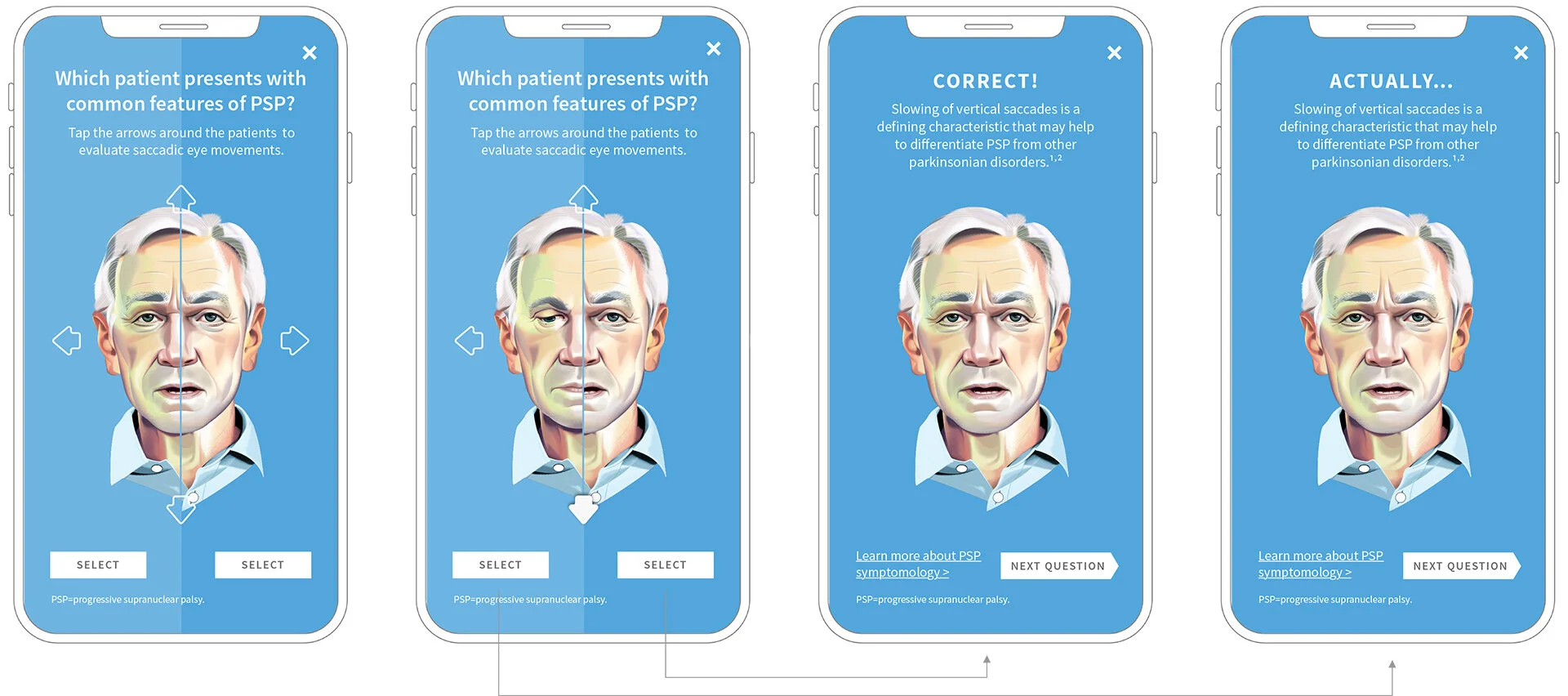BIOGEN | SPOT PSP UNBRANDED CAMPAIGN
U I D E S I G N & A R T D I R E C T I O N
In 2019, a new drug was set to launch that would be the first to slow down the progression of a rare disease call Progressive Supranuclear Palsy (PSP). I came into this unbranded project after a concept was chosen by the client and aided in fine tuning the direction and created the deliverables for the campaign. Sadly, the drug trials did not show significance and the project ended without being released.
The goal of the SPOT PSP Campaign was for doctors to understand the signs of PSP versus Parkinson’s disease. They are very similar in symptomology and those with PSP are often misdiagnosed at first. Highlighting a few of the signs doctors should look for would help patients receive a correct diagnosis and therefore can be prescribed an effective medication.
To start, we worked with Nigel Buchanan to create a set of illustrations that would address 3 of the most noticeable signs of PSP:
When landing on the website, the first thing you would see is a link to test your knowledge of the signs of PSP. The button launches a pop up that prompts the viewer to interact with the symptom and recognize the PSP patient.
UNEXPLAINED FALLS - Viewer moves through an animation of 2 patients walking and one falling backwards.
VERTICAL SUPRANUCLEAR PALSY - Viewer taps arrows to make the eyes of the patient move, similar to an eye test done in a doctor’s office. One side cannot look down.
AXIAL RIGIDITY - Viewer moves through a hunched posture to another leaning slightly backwards.
After each guess, they see if they are correct or wrong and move onto either the next symptom or choose to learn more about the signs of PSP.
The experience ends on a summary of what the audience has learned with a button that leads them to learn more about the signs of PSP.
The rest of the website goes into more detail about symptomology, mechanism of disease, resources for both caregivers and HCPs, and more.
Below are about half of the pages I laid out for mobile and desktop. I also created a set of icons to help bring some imagery throughout the site.










